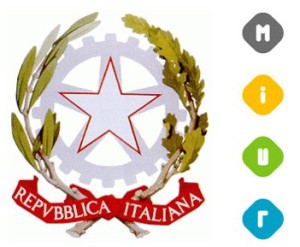Cost Centers and Profit Centers Key Differences & Impact
Forecasting, on the other hand, involves predicting future financial conditions based on historical data and market trends. This allows cost centers to anticipate potential challenges and opportunities, enabling proactive management. For example, a human resources department might forecast future 5 hidden ways to boost your tax refund hiring needs based on projected company growth, allowing them to allocate resources for recruitment and training effectively. A profit center, on the other hand, is a business unit or division within an organization that generates revenue and is accountable for its profitability.
Measuring the success of profit and cost centers requires well-defined performance frameworks. For profit centers, metrics like net profit, operating profit, and economic value added (EVA) are critical benchmarks. These indicators provide insight into how effectively a unit is generating value.
What is Responsibility Centre?
- These are responsible for generating profit be it through controlling cost or increasing revenue.
- In conclusion, cost and profit centers are distinct business units with unique characteristics, advantages, and disadvantages.
- However, this division is still not appropriate because the departments are big.
- A profit center is a branch or division of a company that directly adds or is expected to add to the entire organization’s bottom line.
- Understanding the distinction between profit centers and cost centers is crucial for effective organizational management.
Example – in a manufacturing concern, the productionand sales department of different product lines are profit centers. In a retailstore, different product categories may be different profit centers. In an ITconcern, profit centers may be categorised on various parameters such as saleof products and sale of services, local and export sales etc.
Managers of profit centers are often empowered to make key decisions regarding product development, marketing, and sales strategies. This empowerment not only drives financial performance but also encourages entrepreneurial thinking and innovation. For example, a profit center in the form of a regional sales office can tailor its marketing campaigns to local preferences, thereby enhancing customer engagement and boosting sales. Profit centers are primarily focused on generating revenue and profits, directly impacting the bottom line. In contrast, cost centers are essential for supporting operations but do not directly generate profits; instead, they incur costs that need careful management. Profit Centre refers to that part of the firm for which collection of both cost and revenue takes place.
What is the Transfer Price?
Therefore, a profit center may be better if the organization wants to hold managers accountable for revenue generation. Cost centers are accountable for managing costs and expenses within budget while providing necessary support and services to other departments. The performance of cost centers is typically evaluated based on their ability to manage expenses effectively and efficiently while meeting the organization’s needs. Cost centers do not directly generate revenue or profit for the company, but they are critical in ensuring it can operate efficiently and effectively.
The efficiency of cost centers is often measured by their ability to deliver high-quality services within budgetary constraints. This requires a meticulous approach to resource allocation and process optimization. For example, an IT department that effectively manages its resources can reduce downtime and improve system reliability, which in turn supports the productivity of other departments. By implementing best practices and leveraging technology, cost centers can achieve significant cost savings and operational improvements. Both cost centers and profit centers are essentialto the functioning of a business. The efficient operation of a business is aresult of the combined working of several departments of a business.
Thus, a balanced approach, recognizing the value of both cost and profit centers, is crucial for a sustainable business strategy. This balance acts as the fulcrum upon which the lever of business pivots, propelling the company towards its financial goals. Through this prism, we discern the essence of cost centers and profit centers, each playing a pivotal role in the grand tapestry of an organization’s financial health.
Cost Center
In this way, the measurement of both the elements, i.e. cost (input) and revenue (output) is in terms of money. A profit center is a reporting unit of a business that is responsible for profits generated. An example of a profit center is a subsidiary, which is responsible for the amount of sales generated, as well as all costs incurred. Similarly, a country division is also treated as a profit center, as may a product line.
- Regular performance reviews, supported by financial statements and projections, reinforce accountability.
- In this way, it has a great impact on the revenue, cost and profits of the centre.
- A profit center, on the other hand, is a business unit or division within an organization that generates revenue and is accountable for its profitability.
- Cost centers do not directly generate revenue or profit for the company, but they are critical in ensuring it can operate efficiently and effectively.
For example, if a profit center invests in a new marketing campaign, the ROI will reveal whether the campaign has successfully translated into increased sales and profits. This metric is particularly useful for making informed decisions about future investments and resource allocation. Explore the roles, impacts, and performance metrics of profit centers and cost centers to enhance business efficiency and financial strategy. Of course, profit centers are backed up by cost centers to generate profits, but the functions of profit centers are also noteworthy.
Implement Cost-Saving Measures – Strategies for Effective Management of Cost Centers
The primary objective of a cost center is to control and manage expenses efficiently. Cost centers are typically found in large organizations where various departments contribute to the overall operations. Examples of cost centers include administrative departments, IT support, maintenance, and human resources. Meanwhile, profit centers are responsible for generating revenue and driving organizational profits. They are typically more focused on sales and marketing and may require additional resources to generate revenue. Some examples of profit centers include product lines, business units, and divisions.
Profit centers are typically responsible for selling products or services to external customers. Examples of profit centers include sales departments, retail stores, product lines, and business segments. Cost centers and profit centers are two distinct concepts in business management that play crucial roles in financial analysis and decision-making. While both are essential for evaluating the performance of different business units, they have distinct attributes and serve different purposes. In this article, we will explore the characteristics of cost centers and profit centers, highlighting their differences and similarities. Implementing effective cost control mechanisms is essential for the efficient operation of cost centers.
For example, an IT department is a cost center that incurs expenses related to maintaining and upgrading technology infrastructure, which is crucial for the overall productivity of the company. In conclusion, cost and profit centers are distinct business units with unique characteristics, advantages, and disadvantages. Cost centers are responsible for managing and controlling costs within an organization. They do not generate revenue directly but are critical for operating expenses and improving profitability.
A Profit Center is a department of the company that not only adds to its Expenses but helps generate significant Revenue. Each Profit Center within an organization operates more or less separately and has its own Revenue and Expenses. The main objective of a cost centre is to track the expenses of the company. This concept was about the difference between a cost centre and a profit centre.
Collaboration between profit and cost centers is essential for effective budget coordination. Profit centers depend on cost centers for the infrastructure and services necessary to achieve revenue targets, while cost centers rely on profit centers for funding. Regular communication and joint planning ensure budgetary priorities are aligned.
Cost Control Mechanisms in Cost Centers
The management team focuses on minimizing expenses and increasing productivity, as their performance is evaluated based on how well they can manage costs. In addition, they are tasked with identifying cost-saving opportunities and implementing measures to reduce expenses. Another important cost control mechanism is process optimization, which involves streamlining workflows to eliminate inefficiencies and reduce costs. Techniques such as Lean management and Six Sigma can be employed to identify waste and improve processes.
Challenges in Managing Cost and Profit Centers
In contrast, a Profit Center focuses on generating and maximizing revenue streams by identifying and improving activities such as sales. They ensure operational efficiency and support the revenue-generating units of an organization. Cost Centre and Profit Centre are the two fundamental accounting and management tools that any organization measures, controls, and even evaluates its performance. Even though both play different roles, knowing what makes each difference and for what purpose can help companies maximize their operations and profitability.






















